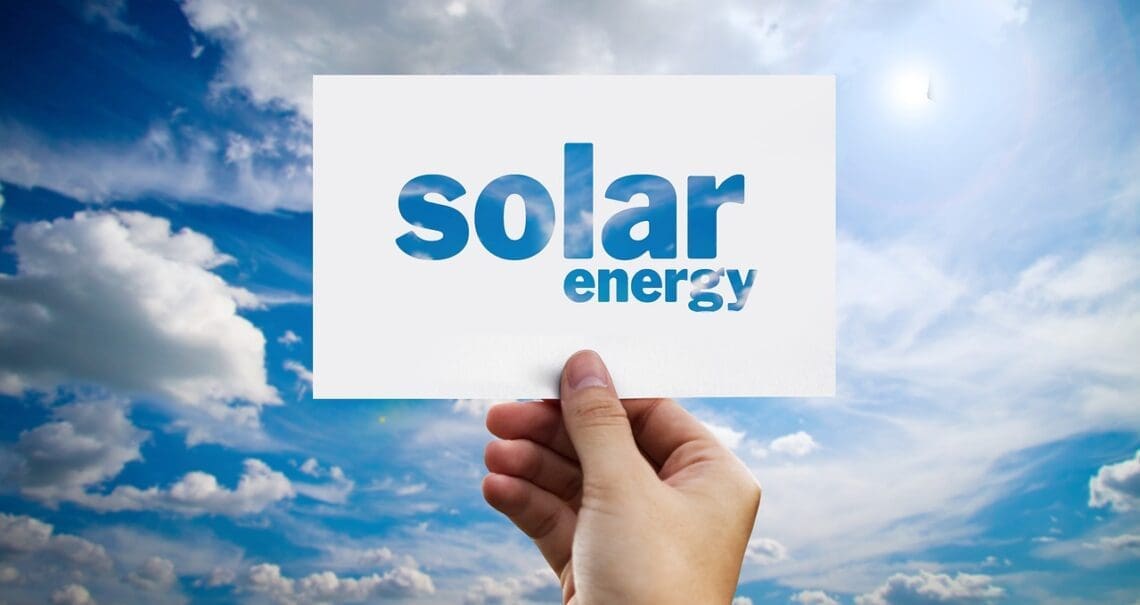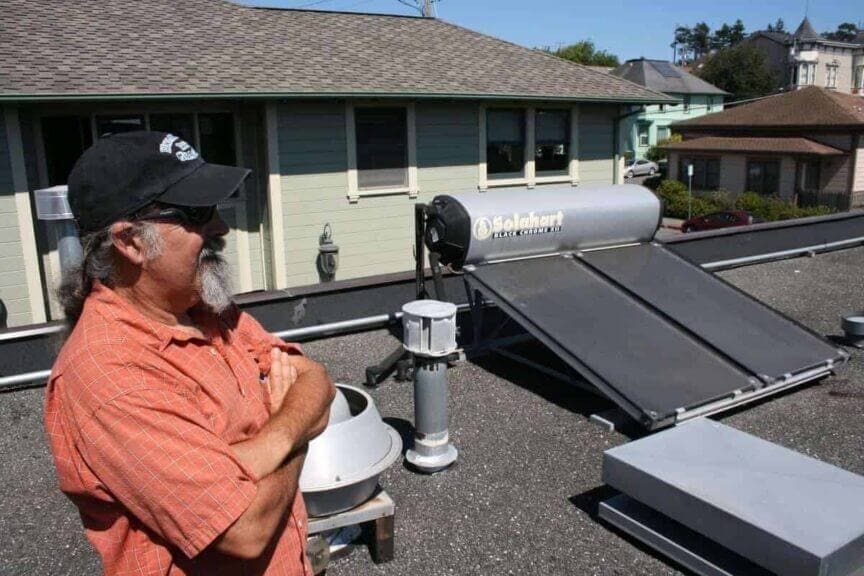
As the world increasingly shifts towards renewable energy, many homeowners are contemplating the transition from conventional electricity supplied by utility companies to solar energy.systems.
Key Points
- Initial costs can vary based on the size of the system, location, and the chosen provider, but federal tax credits and state incentives can significantly reduce out-of-pocket expenses.
- The installation process typically ranges from one to three days, depending on the complexity and size of the system.
- If your system generates excess energy, it can often be fed back into the grid, potentially earning you credits or payments from your utility company.
- Solar panels generate electricity from sunlight, so they do not produce energy at night. However, battery storage systems can store energy generated during the day for use at night.
- Cleaning them a few times a year and scheduling professional inspections can help ensure best performance.
This decision is not just about cheaper utility bills; it’s also a commitment to environmental sustainability, energy independence, and long-term savings.
In this guide, we’ll explore the various aspects of switching to a solar energy system, including its benefits, the installation process, and what to expect after you ditch the grid.
Contents
Why Go Solar?
Switching to solar energy has advantages that can enhance your quality of life while contributing to the greater good. Solar energy is renewable and abundant, meaning it won’t deplete over time like fossil fuels.
It helps reduce greenhouse gas emissions, combating climate change and promoting a healthier environment. Solar energy systems have financial benefits as well; you no longer have an electric bill to pay and the value of your home increases.
Understanding Solar Energy
Solar energy is the radiant light and heat from the sun that can be harnessed using various technologies, particularly photovoltaic (PV) panels. These panels convert sunlight into electricity, which can be used to power your home or be fed back into the grid. Solar energy can also be captured for heating purposes, providing hot water or heating indoor spaces.
The use of solar hot water heater systems increased in the U.S. and around the world as more home owners are having the hot water systems installed on their roofs.

Types of Solar Energy Systems
There are primarily two types of solar energy systems: grid-tied and off-grid systems. Grid-tied systems are connected to the utility grid, allowing homeowners to draw electricity when solar production is low and sell excess electricity back to the grid.
Off-grid systems are self-sufficient, using battery storage to provide power independently from the utility grid. There are also hybrid systems that combine both approaches, offering flexibility and reliability.
Common Misconceptions
Despite the advantages of solar energy, several misconceptions exist. One common belief is that solar panels are only effective in sunny climates; however, they can generate power even on cloudy days—the same way that you can still get a sunburn when the sun is hidden behind clouds.
Another misconception is that solar energy systems are too expensive. While the upfront costs can be high, various financing options and incentives make solar more accessible than ever.
Understanding these misconceptions is important in order to make an informed decision about making the switch.
How to Switch to Solar Energy: A Guide
Assess Your Home’s Solar Potential
The first step in transitioning to solar energy is to evaluate your home’s solar potential. Factors such as the amount of sunlight your roof receives, the angle and orientation of the roof, and obstructions like trees or buildings can affect whether your home is a good candidate.
As I was researching solar panel companies for this article, I came across one that I really like. Antifa HQ readers can use the link below to request a free consultation with a solar specialist. They will assess your home’s potential, answer questions, and provide a no cost, no obligation estimate for installation of a solar energy system.
GET YOUR FREE CONSULTATION WITH A SOLAR SPECIALIST
They’ll also be able to provide you with an idea of how much money you can save when compared with what you’re currently paying the electric company.
Financial Considerations
Cost is often the most significant barrier for homeowners considering the switch. Analyzing your current energy usage and costs can help you understand the potential savings.
Consider the total cost of ownership, including installation, maintenance, and potential repairs, compared to long-term savings on energy bills.
Looking at all the costs involved can help you decide if making the switch is a good financial investment. Don’t just consider the installation costs. Also consider the amount of money you’ll save that would have gone to the utility company each month
Understanding Incentives and Rebates
One of the most attractive aspects of switching to solar is the availability of financial incentives. Federal tax credits, state rebates, and local incentives can dramatically reduce the cost of installation.
For instance, the Federal Solar Investment Tax Credit, officially known as the Residential Clean Energy Credit allows homeowners to deduct a portion of their solar energy system costs from their federal taxes.
According to the IRS.gov website, the Residential Clean Energy Credit equals 30% of the costs of new, qualified clean energy property for your home installed anytime from 2022 through 2032.
Researching available incentives in your area is an important step in order to maximize your savings.
Pro tip: Move fast before President Trump and the EPA kill the solar energy tax credit program as they did with many other clean energy initiatives.
You’ve Decided to Make the Switch. Now What? A Step-by-Step Guide
Step 1: Research Solar Providers
Once you’ve decided to switch to solar energy, the next step is to research solar providers in your area. Look for companies with a solid reputation, positive customer reviews, and experience in the industry. Comparing offerings from multiple providers will help you understand the market and find the best fit for your needs.

Step 2: Get Quotes and Compare Options
After creating a list of potential solar providers, contact each one to request a quote. Compare the pricing and installation options of each service provider.
Ensure each quote includes a detailed breakdown of costs: labor, equipment, warranties, and financing options. This will help you make an informed decision about which provider offers the best value for your investment.
Step 3: Site Assessment and Design
After choosing a solar panel installation company, your home will be inspected in order to determine the best design for your system.
This involves a specialist coming to your home and evaluating your roof’s structure and orientation, shading, and the potential integration with your existing electrical system.
The design will determine the number of panels needed, their placement, and the overall capacity of the system.
Step 4: Financing Your Solar System
There are several financing options to consider when paying for solar panel installation. Cash purchases, solar loans, and leasing programs are popular methods.
Each option has its pros and cons, such as ownership benefits and tax credits associated with cash purchases versus lower upfront costs with leases. Evaluate which financing method works best for your circumstances.
Step 5: Installation Process
The installation process usually takes one to three days, depending on the size of the system and your home’s characteristics.
Once installed, the system will undergo inspections to ensure everything meets local regulations and safety standards.
After a successful inspection, your system will be connected to the grid and start generating solar energy.
Post-Installation Considerations
Monitoring Your Solar Energy System
After installation, monitoring your solar energy production is important. Most systems come with monitoring software that allows you to track energy generation and consumption in real-time.
Regular monitoring helps in identifying issues early, ensuring your system operates efficiently and maximizes savings.
Maintenance and Upkeep
Solar panels require minimal maintenance, but periodic cleaning and inspections are necessary to ensure they are performing at optimal levels.
Dust, debris, and bird poop can accumulate on panels, reducing efficiency. Depending on your location, cleaning might be necessary once or twice a year.
It’s a good idea to schedule regular professional inspections to check for any potential issues.
After you’ve been using your new solar energy system for a while and you’ve observed the specialist carry out inspections, you may be able to do them on your own for even more savings.
Understanding Your Energy Savings
Once your solar system is operational, understanding your energy savings will help you to determine the effectiveness of your investment.
Monitoring your utility bill can help you to determine how much energy you’re generating versus what you’re consuming from the grid.
Tracking savings over time will help you appreciate the long-term financial benefits of going solar.
Real-Life Savings and Statistics
Projected Savings Over Time
One of the most compelling reasons to switch to solar energy is the potential to save a lot of money.
Homeowners can expect to save thousands of dollars on energy bills over the lifespan of their solar panels, which typically last 25 to 30 years. With the right system, average savings can range from 50% to 90%, depending on energy use and local utility rates.
Impact on Property Value
Installing solar panels can also increase your property value. Numerous studies have shown that homes with solar energy systems sell for more than comparable homes without solar.
The National Renewable Energy Laboratory (NREL) estimates that for every $1 in energy savings, solar increases home value by approximately $20.
This return on investment can be particularly beneficial if you decide to sell your home in the future.
Environmental Benefits
Switching to solar energy significantly reduces your carbon footprint. By utilizing a clean and renewable energy source, homeowners contribute to cleaner air and a healthier environment.
It’s estimated that a typical residential solar panel system can offset about 100,000 pounds of carbon dioxide over its lifespan, equivalent to planting over 2,000 trees.
These benefits extend beyond individual homeowners, contributing to a more sustainable energy future on a global scale.
Encouragement to Take the Leap
Transitioning to solar energy is not just a smart financial decision but also a commitment to environmental stewardship.
With the amount of information and number of resources available, homeowners can make informed choices that align with their values and financial goals.
The savings, increased property value, and positive environmental impact make solar energy an attractive alternative to traditional electricity sources.
Resources for Further Information
For those considering making the switch to solar, various resources are available to guide you through the process.
Websites like the Solar Energy Industries Association (SEIA) and local energy agencies provide valuable information on solar technologies, financing options, and incentive programs.
Engaging with community solar initiatives can provide information and support from other homeowners in your area.
FAQs
What are the initial costs of installing solar panels?
Initial costs can vary based on the size of the system, location, and the chosen provider, but federal tax credits and state incentives can significantly reduce out-of-pocket expenses.
How long does it take to install solar panels?
The installation process typically ranges from one to three days, depending on the complexity and size of the system.
What happens if my solar panels produce more energy than I use?
If your system generates excess energy, it can often be fed back into the grid, potentially earning you credits or payments from your utility company, depending on net metering policies.
How can I maintain my solar panels?
Regular cleaning and inspections are essential for maintaining solar panels. Cleaning them a few times a year and scheduling professional inspections can help ensure optimal performance.
Do solar panels work at night?
Solar panels generate electricity from sunlight, so they do not produce energy at night. However, battery storage systems can store energy generated during the day for use at night.



